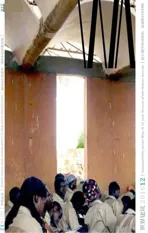“最好的作品”与可持续性
2016-04-07张利
张利
“最好的作品”与可持续性
张利
总有人说:最好的作品是未完成的作品。相比于授予建筑师的普利兹克建筑奖,授予建筑作品的阿卡汗奖,豪瑞可持续建筑奖(现已更名为拉法基豪瑞奖)有着特殊的地位——它授予尚未建成的设计方案,其评审的出发点是该方案的可持续性。
经过了12年4届的评奖,豪瑞奖所推崇的探索可持续建筑的5项标准经得起推敲与时间考验。这5项标准是创新与可转移性——进步、道德标准与社会包容——人、资源与环境表现——地球、经济可行性与兼容性——繁荣、环境与审美效果——地点。
标准的制定得益于与拉法基豪瑞基金会合作的院校,学者们并未把可持续定义在狭义的范围里,而是兼顾到建筑项目所能持续发挥作用的各个层面。依据这5项标准所评选出的获奖作品在世界各地得到实施之后均获得很高评价并持续发挥着作用。
本期我们收录了18个项目,包含:具有典型性的公共设施设计探索,有位于斯图加特这样的城市的火车站,也有位于冈多村中的砖石学校;多种类型对社区的改造与更新的尝试,从贫民窟到农庄,从历史错综的氏族聚落到城郊的农村;对于基础设施再利用的创造性设计,设计者将无法发挥作用的公共设施改为音乐学校、公园,试图以小规模的措施恢复古河活力,将防洪设施与日常公共服务结合;还能看到致力于减少浪费与降低建筑成本的惊人的建议,在材料与模具方面创造性的运用令人眼前一亮,等等。
每一项作品,设计者面对的都是复杂的现实问题。我们能够强烈地感受到他们对这些项目的热忱与执着,感受到他们心怀对未来的强烈期待、使命感与责任感,以及其中超越对经济收益、个人成就预期的让建筑真正服务于人的愿望。这正是从事建筑与城市设计者本应具有的出发点。
豪瑞奖在中国具有特殊的意义,它一直坚持表达对中国城镇化、历史价值诠释以及社区更新的关注。第一届豪瑞奖亚太区金奖授予常青教授的杭州来氏聚落再生设计,第二届豪瑞奖全球铜奖授予张悦教授团队的乡村社区可持续规划设计,都是这方面的例证。我们期待拉法基豪瑞奖所代表的广义可持续性价值观继续关注与肯定在中国发生的影响与改变世界最多人口的建筑实践。
刊载项目中,仍有一部分至今尚未建成。往往在建筑与城市规划这一领域,许多怀着理想与抱负的美好设想因为实现过程中多种问题与无奈无法最终得以实现,而豪瑞奖给了这些方案一次机会,让人们可以看到设计者的“初衷”。
感谢拉法基豪瑞基金会与拉法基豪瑞中国在本刊制作中给予的支持。
People tend to say that the best project is the one still uncompleted. In contrast to the established architect awards like the Pritzker Award and the Aga Khan Award for Architecture, the Holcim Awards for Sustainable Construction (now officially the LafargeHolcim Awards) are given to uncompleted projects, at least uncompleted yet. The sole value of these awards is one unmistakable word: sustainability.
With their four cycles' (twelve years') worth of running, what the Holcim Awards have are 5 criteria tried and tested: Innovation and transferability –Progress, Ethical standards and social inclusion –People, Resource and environmental performance – Planet, Economic viability and compatibility –Prosperity, Contextual and aesthetic impact – Place.
These criteria owe substantially to the minds from the schools working with LafargeHolcim. These minds have rejected to interpret sustainability as a narrow technological subject. On the contrary, they have incorporated almost all aspects of architecture on which sustainability may be taken care of. Winning projects selected from all around the globe based upon these criteria have made convincing examples of broader sustainability since their completion. This in turn has given the Holcim Awards more and more prestige.
We are publishing 18 projects in this issue, including: experiments in typical public facilities, such as the main station of Stuttgart, the secondary school in Gando, Burkina Faso; diverse attempts in community making and regenerating, from clan’s settlements of complex history to rural areas on the outskirt of major cities; creative reuse of infrastructure, such as the renovation of abandoned facilities into a music school and parks, giving vividness to an old river with design intervention, and the combination of daily public use with flood infrastructure; radical proposals of construction cost reduction, with eye-opening use of materials and molds.
In each project, the designer faces a series of complicated problems. In each project, we see and feel the designer's passion and perseverance, the genuine aspiration of making architecture work for people, and the fact that such determination and responsibility far exceeds any personal desire for money or fame.
The Holcim Awards have unique meanings to China. Through their twelve years, the Holcim Awards have maintained the keen eyes on Chinese urbanisation, historical reinterpretation, and community regeneration. In the 1st Awards cycle, the Asia-Pacific Gold was awarded to Prof. CHANG Qing's "Design for a Clan Settlement's Regeneration". In the 2nd cycle, the Global Bronze was awarded to Prof. ZHANG Yue's "Sustainable Planning for a Rural Community". Both projects provide solid proof of the broad sustainable approach which the Holcim Awards advocate. We watch the coming LafargeHolcim Awards cycles with great curiosity, wishing that the innovative experiments related to the world's largest population base to be honoured more.
A number of the projects published in this issue are yet to be built. This is the known story of architecture that for whatever reasons, occasionally, it takes painfully long time to realise truly beautiful ideas. Without the Holcim Awards, we couldn't have given these fantastic designs such exposure.
Our thanks to LafargeHolcim Foundation and LafargeHolcim China, whose support makes this issue possible.
"The Best Project" and Sustainability
ZHANG Li
清华大学建筑学院/《世界建筑》
2016-12-11
